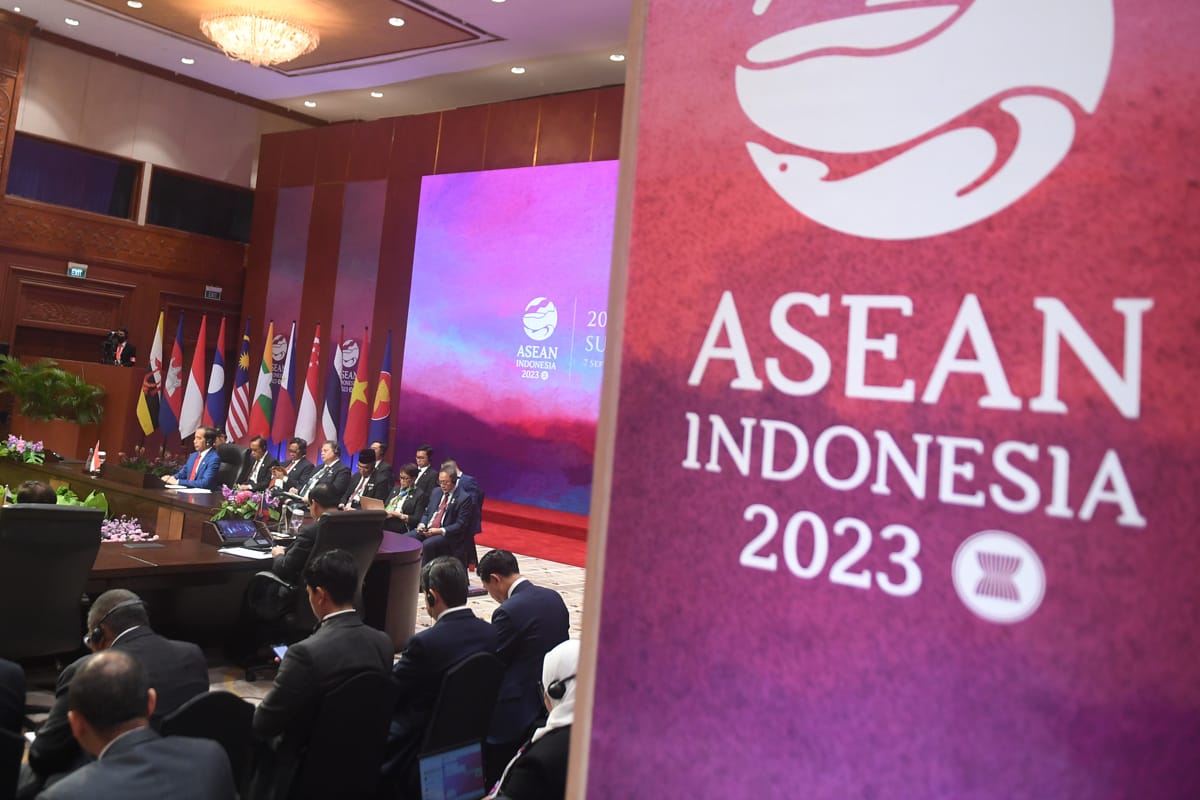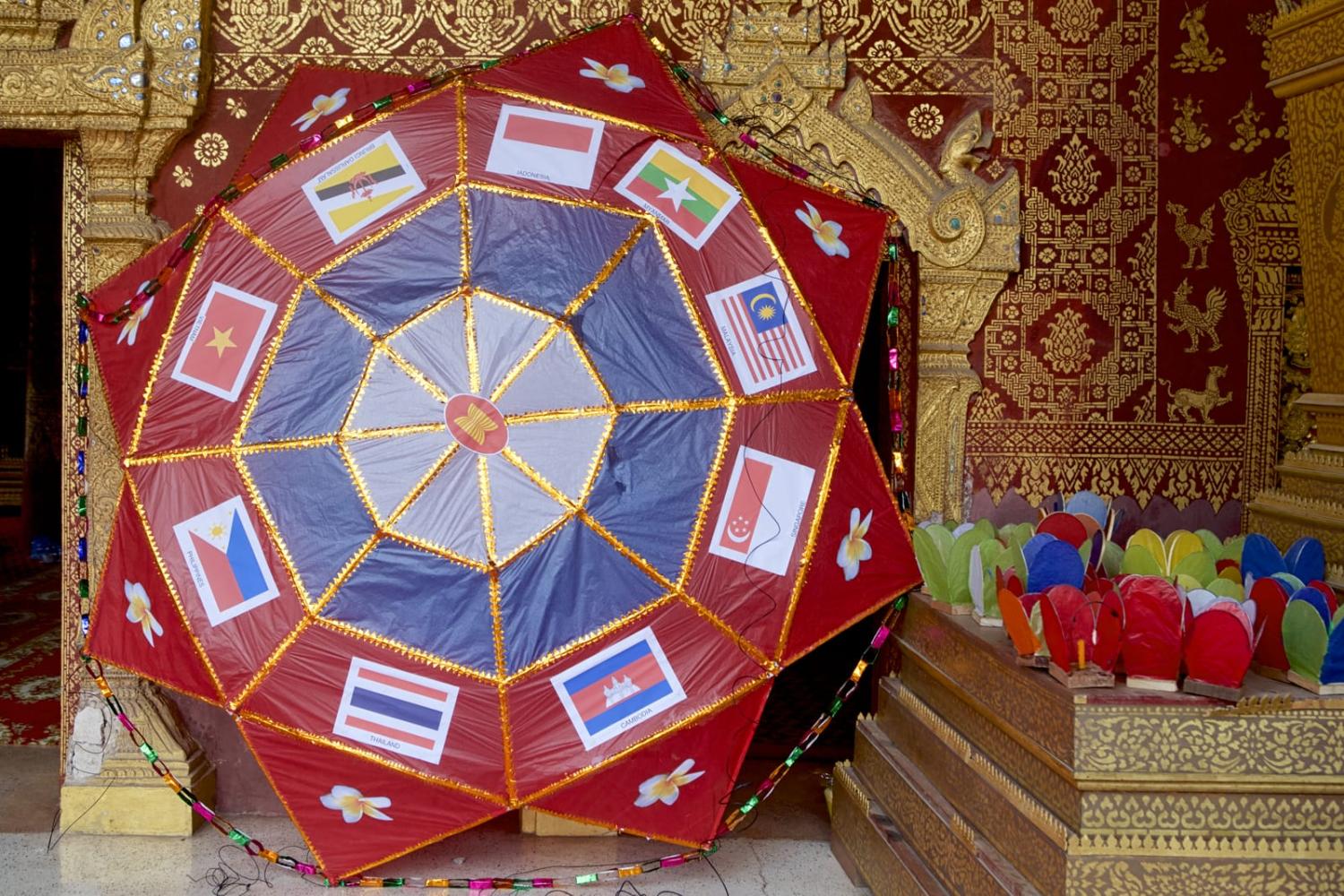Over just a few years, the term “Indo-Pacific” has evolved from a mere geographical descriptor into a geopolitical rallying point. Coined by Japan and championed by the United States, the prevailing script speaks of a “Free and Open Indo-Pacific”, a storyline that has not only set the scene but also cast the roles – often to the chagrin of China. Amid this evolving narrative landscape, the Association of Southeast Asian Nations needs to play a more active role by advancing its own strategic narrative of the Indo-Pacific.
Power is not solely wielded through economic might or military arsenals; it’s also exercised through the stories nations tell. By offering a coherent vision, these strategic narratives can serve as a lens through which actions are interpreted and therefore understood, public support mobilised, policies crafted and coalitions managed. Furthermore, strategic narratives can operate on multiple levels – systemic, national, and issue-specific, depending on the context. However, regardless of the level at which it operates, a strategic narrative can have far-reaching consequences.
Consider the “War on Terror” narrative that emerged after the 9/11 attacks. This narrative not only justified military interventions in Afghanistan but also paved the way for the 2003 invasion of Iraq. Framed as a necessary step to eliminate weapons of mass destruction and bring democracy to the Middle East, the narrative significantly shaped international alignment. Countries were categorised as “either with us or against us”, leading to the formation of the “coalition of the willing” that supported the invasion. This serves as a potent example of how a strategic narrative can influence policy decisions and have momentous impact on global politics, alliances, and international institutions.
Today, the United States is enlisting a new narrative to compete with China. The “Free and Open Indo-Pacific” narrative has sought to rally like-minded nations around a vision of a “rules-based order” that is heavily influenced by Anglo-Saxon values. While most countries tend to support the general idea of a rules-based order, East Asians do not necessarily prioritise freedom and openness over other values, especially when the anti-Chinese connotation is so obvious. Instead of creating a united front, the prevailing narrative is therefore likely to deepen divisions in a region defined by diversity, and erode the already fragile regional architecture.
This is where ASEAN should step in. With its diverse membership that includes democracies, monarchies, and single-party states, ASEAN is well positioned to offer a more inclusive narrative. Its central geographic location, straddling the waters between the Indian and Pacific Oceans, further amplifies its role as a connector and mediator.

The 2019 release of the ASEAN Outlook on the Indo-Pacific signifies a crucial juncture where the bloc attempts to articulate a collective regional stance. However, to have maximum impact, it must now turn the elements in the Outlook into a coherent, well-crafted narrative with a clear “tagline”. The narrative of an “Inclusive and Interconnected Indo-Pacific” could serve as an ASEAN answer to the prevailing “Free and Open” framework. This vision would emphasise the importance of multilateralism, open dialogue, and shared prosperity. It aligns well with ASEAN’s core principles of consensus and non-interference, offering an inclusive approach that rejects the framing of the region as a geopolitical battleground, but instead as a network of diverse nations united by shared challenges and a desire for prosperity.
This narrative has the potential to resonate with a broad range of stakeholders, especially middle powers that have articulated their own Indo-Pacific vision such as Australia and South Korea. Like Southeast Asian countries, these middle powers do not want to take sides and thus could find this narrative appealing as it offers a path that prioritises cooperation over confrontation.
Furthermore, with this new narrative, ASEAN has the opportunity to “own” the term Indo-Pacific, shifting it away from its current perception as a concept that is anti-China. This would not only reassert ASEAN’s centrality but also recast the bloc as a diplomatic bridge, mitigating the divisive impact of existing narratives and fostering a more inclusive regional architecture that allows sufficient space for both superpowers.
To effectively disseminate the “Inclusive and Interconnected Indo-Pacific” narrative, ASEAN could initiate high-level consultations to secure formal endorsements from key regional players such as India, Australia and South Korea, ideally to be unveiled at high-profile summits for maximum impact. Special sessions at the ASEAN Regional Forum could aim for actionable resolutions that firmly embed this narrative into regional policy frameworks. Lastly, a targeted public diplomacy campaign, involving strategic partnerships with influential media outlets and think tanks, could further popularise and legitimise the narrative. Regardless of the specific tactic, internal policy alignment among ASEAN member states is vital to ensure its long-term viability and effectiveness.
By actively taking part in shaping the Indo-Pacific discourse, ASEAN states can ensure that its interests are not sidelined in a narrative dominated by major powers. Furthermore, advancing an independent strategic narrative shows that ASEAN is committed to taking substantive steps to assert its centrality. By setting the terms for constructive engagement, ASEAN can contribute to a more stable, harmonious, and inclusive regional architecture that accommodates the complexities and diversities inherent in the Indo-Pacific.

